World
Catastrophic Libya flood kills thousands, desperate relatives search for survivors
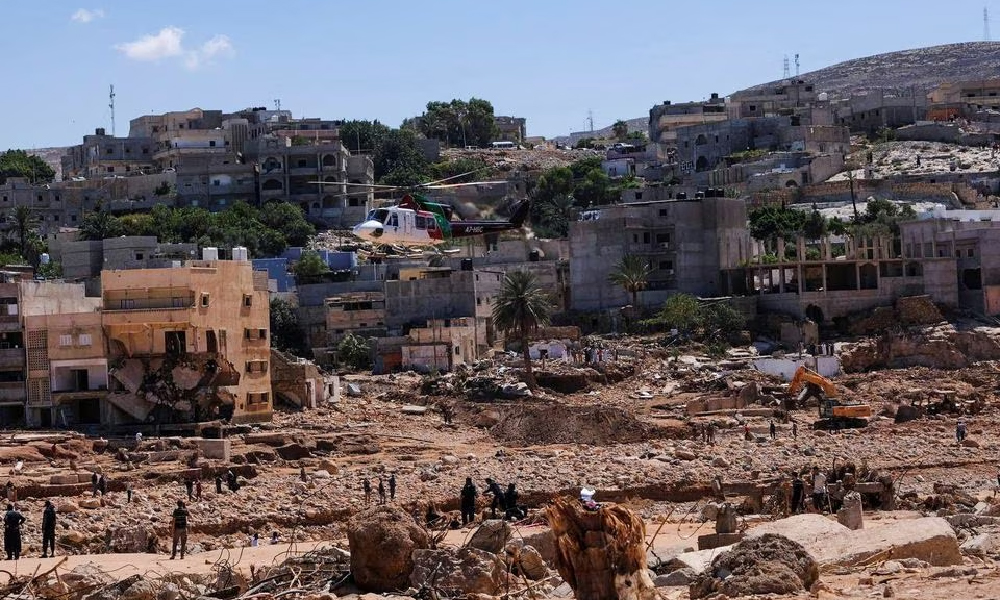
Residents of the devastated Libyan city of Derna desperately searched for missing relatives on Wednesday and rescue workers appealed for more body bags, after a catastrophic flood that killed thousands of people and swept many out to sea, Reuters reported.
Swathes of the Mediterranean city were obliterated by a torrent of water unleashed by a powerful storm that swept down a usually dry riverbed on Sunday night, bursting dams above the city. Multi-storey buildings collapsed with sleeping families inside.
Officials have put the number of missing at 10,000. The U.N. aid agency OCHA said the figure was at least 5,000.
Usama Al Husadi, a 52-year-old driver, has been searching for his wife and five children since the disaster. “I went by foot searching for them … I went to all hospitals and schools but no luck,” he told Reuters, weeping with his head in his hands.
Husadi, who had been working the night of the storm, dialled his wife’s phone number once again. It was switched off. “We lost at least 50 members from my father’s family, between missing and dead,” he said.
The beach was littered with clothes, toys, furniture, shoes and other possessions swept out of homes by the torrent, read the report.
Streets were covered in deep mud and strewn with uprooted trees and hundreds of wrecked cars, many flipped on their sides or their roofs. One car was wedged on the second-floor balcony of a gutted building.
“I survived with my wife but I lost my sister,” Mohamed Mohsen Bujmila, a 41-year-old engineer, said. “My sister lives downtown where most of the destruction happened. We found the bodies of her husband and son and buried them.”
He also found the bodies of two strangers in his apartment.
As he spoke an Egyptian search-and-rescue team nearby recovered the body of his neighbour. “This is Aunt Khadija, may God grant her heaven,” Bujmila said.
The devastation is clear from high points above Derna, where the densely populated city centre, built along a seasonal riverbed, was now a wide, flat crescent of earth with stretches of muddy water gleaming in the sun. Buildings were swept away.
Death tolls given by officials so far have varied, but all are in the thousands.
Hichem Abu Chkiouat, minister of civil aviation in the administration that runs eastern Libya, told Reuters more than 5,300 dead had been counted so far, and said the number was likely to increase significantly and might even double. The “sea is constantly dumping dozens of bodies”, he said by phone.
Tariq Kharaz, a spokesperson for the eastern authorities, said 3,200 bodies had been recovered, and 1,100 of them had yet to be identified.
Derna Mayor Abdulmenam al-Ghaithi told Saudi-owned Al Arabiya television the estimated the number of deaths in the city could reach 18,000 to 20,000 based on the number of districts destroyed by the flood.
Rescue teams have arrived from Egypt, Tunisia, the United Arab Emirates, Turkey, and Qatar, al-Ghaithi said.
“We actually need teams specialised in recovering bodies,” he said. “I fear that the city will be infected with an epidemic due to the large number of bodies under the rubble and in the water.”
Turkey is also sending a ship carrying equipment to set up two field hospitals and 148 medical staff to help with the rescue efforts, Reuters reported.
The U.N. migration agency, the International Organization for Migration, said at least 30,000 people had been displaced in Derna.
“We need bags for the bodies,” Lutfi al-Misrati, the director of the search team, told Al Jazeera.
Rescue operations are complicated by deep political fractures in the country of 7 million people that has lacked a strong central government and been at war on-and-off since a NATO-backed uprising that toppled Muammar Gaddafi in 2011.
An internationally recognised Government of National Unity (GNU) is based in Tripoli, in the west, while a parallel administration operates in the east, including Derna.
Libya’s Tripoli-based Prime Minister Abdulhamid al-Dbeibah called the floods an unprecedented catastrophe. Libya’s Presidential Council head Mohammed al-Menfi has called for national unity.
The bodies of dozens of Egyptian migrants who were among the victims of the storm in Libya arrived on Wednesday in Beni Suef, about 110km (68 miles) south of Cairo, Egyptian media reported.
World
As Iran tensions build, US military moves warplanes to reinforce Middle East
U.S. President Donald Trump threatened Iran on Sunday with bombing and secondary tariffs if Tehran did not come to an agreement with Washington over its nuclear program.
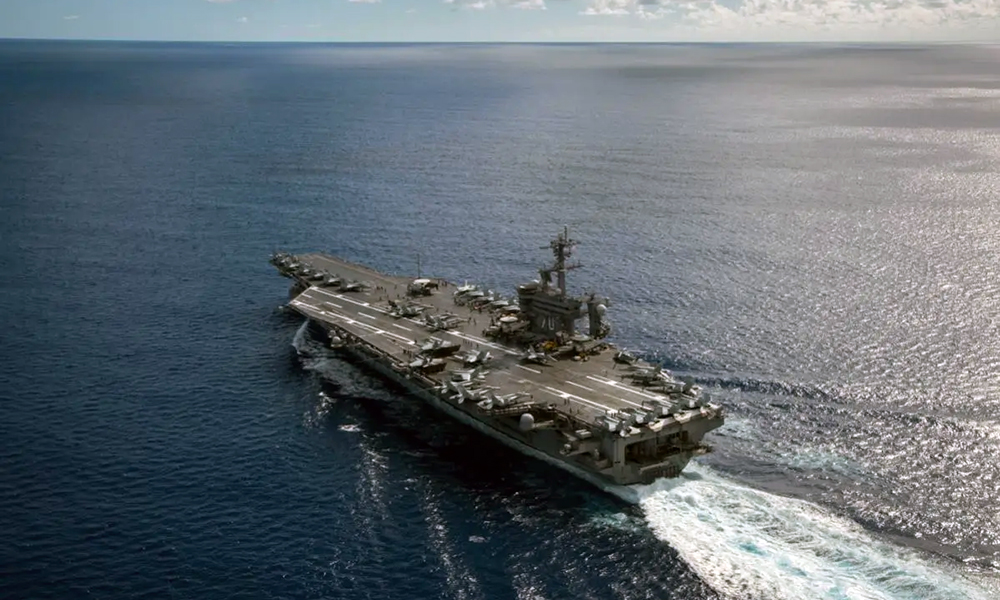
U.S. Defense Secretary Pete Hegseth has reinforced U.S. military capability in the Middle East with more warplanes, the Pentagon said on Tuesday, amid a more than two-week-old U.S. bombing campaign in Yemen and mounting tensions with Iran, Reuters reported.
The Pentagon’s brief statement did not specify which aircraft were being deployed or where precisely they were sent.
However, as many as six B-2 bombers have relocated in the past week or so to a U.S.-British military base on the Indian Ocean island of Diego Garcia, according to U.S. officials, speaking on condition of anonymity.
Experts say that puts the B-2s, which have stealth technology and are equipped to carry the heaviest U.S. bombs and nuclear weapons, in an ideal position to operate in the Middle East.
“Should Iran or its proxies threaten American personnel and interests in the region, the United States will take decisive action to defend our people,” Pentagon spokesperson Sean Parnell said in a statement.
The U.S. military’s Strategic Command has declined to say how many B-2s have reached Diego Garcia and noted that it does not comment on exercises or operations involving the B-2.
There is already considerable firepower in the Middle East and the U.S. military will soon have two aircraft carriers in the region, read the report.
U.S. President Donald Trump threatened Iran on Sunday with bombing and secondary tariffs if Tehran did not come to an agreement with Washington over its nuclear program.
While B-2 bombers have been employed to strike buried Houthi targets in Yemen, most experts say use of the stealthy bomber is overkill there and the targets aren’t buried so deeply.
However, the B-2 is equipped to carry America’s most potent bomb — the 30,000-pound GBU-57 Massive Ordnance Penetrator. That is the weapon that experts say could be used to strike Iran’s nuclear program.
There are only 20 B-2 bombers in the Air Force’s inventory so they are usually used sparingly.
Iran’s Supreme Leader Ayatollah Ali Khamenei said on Monday the U.S. would receive a strong blow if Trump followed through with his threats.
Revolutionary Guards Aerospace Commander Amirali Hajizadeh threatened U.S. forces in the Middle East, noting American bases in the Middle East and adding: “They are in a glass house and should not throw stones.”
One official told Reuters that the U.S. military was also moving some air defense capabilities from Asia to the Middle East.
In his 2017-2021 term, Trump withdrew the U.S. from a 2015 deal between Iran and world powers that placed strict limits on Tehran’s disputed nuclear activities in exchange for sanctions relief. Trump also reimposed sweeping U.S. sanctions.
Since then, Iran has far surpassed that deal’s limits on uranium enrichment.
Western powers accuse Iran of having a clandestine agenda to develop nuclear weapons capability by enriching uranium to a high level of fissile purity, above what they say is justifiable for a civilian atomic energy program. Tehran says its nuclear program is wholly for civilian energy purposes.
World
Israel kills Hezbollah official in deadly Beirut airstrike
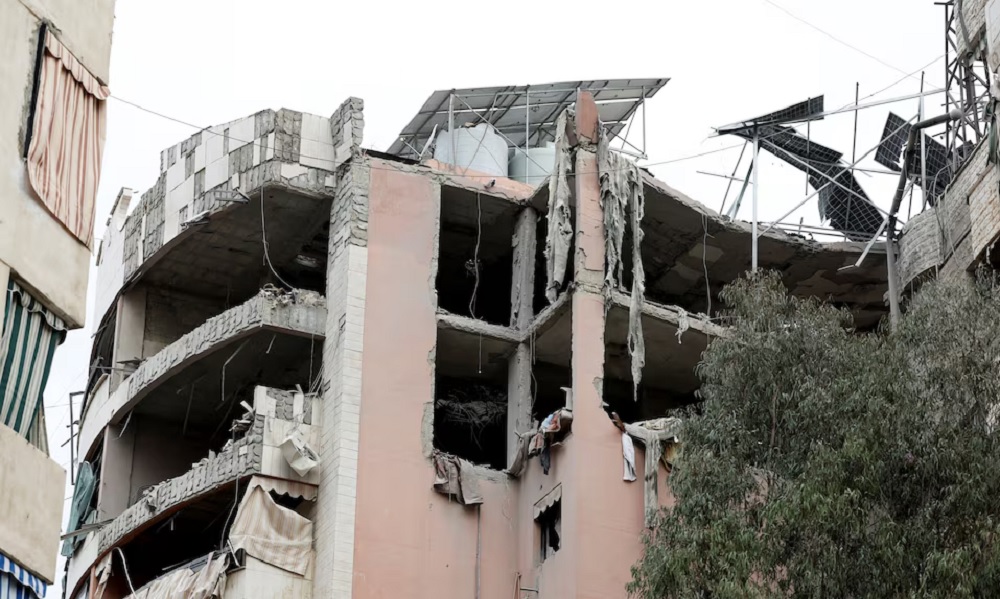
An Israeli airstrike killed four people including a Hezbollah official in Beirut’s southern suburbs on Tuesday, a Lebanese security source said, further testing a shaky ceasefire between Israel and Iran-backed Hezbollah.
The Israeli military said the official – Hassan Bdeir – was a member of a Hezbollah unit and Iran’s Quds Force, and he had assisted the Palestinian group Hamas in planning a “significant and imminent terror attack against Israeli civilians,” Reuters reported.
The Lebanese security source said the target was a Hezbollah figure whose responsibilities included the Palestinian file. The Lebanese health ministry said the strike killed four people – including a woman – and wounded seven others.
It marked Israel’s second airstrike in the Hezbollah-controlled suburb of Beirut in five days, adding to strains on the U.S.-brokered ceasefire that ended last year’s devastating conflict.
The attacks on Beirut’s southern suburbs have resumed at a time of broader escalation in the region, with Israel having restarted Gaza strikes after a two-month truce and the United States hitting the Iran-aligned Houthis of Yemen in a bid to get them to stop attacking Red Sea shipping.
Hezbollah lawmaker Ibrahim Moussawi said the Israeli attack amounted to “a major and severe aggression that has escalated the situation to an entirely different level”.
Speaking in a televised statement after visiting the building that was struck, he called on the Lebanese state to “activate the highest level of diplomacy to find solutions”.
Israeli Foreign Minister Gideon Saar said the eliminated Hezbollah operative posed “a real and immediate threat”. “We expect Lebanon to take action to uproot terrorist organizations acting within its borders against Israel,” he said.
Israel dealt severe blows to Hezbollah in the war, killing thousands of its fighters, destroying much of it arsenal and eliminating its top leadership including Hassan Nasrallah.
Hezbollah has denied any role in recent rocket attacks from Lebanon towards Israel, including one that prompted Israel to carry out an airstrike on the southern suburbs last Friday.
Tuesday’s strike in the early hours appeared to have damaged the upper three floors of a building, a Reuters reporter at the scene said, with the balconies of those floors blown out.
The glass on the floors below was intact, indicating a targeted strike. Ambulances were at the scene as families fled to other parts of Beirut.
There was no advance warning, in contrast to the attack on Friday when the Israeli military announced which building it intended to hit and ordered residents to leave the area.
Lebanese President Joseph Aoun condemned the latest airstrike, calling it a “dangerous warning” that signals premeditated intentions against Lebanon, which would intensify diplomatic outreach and mobilise international allies.
Lebanese Prime Minister Nawaf Salam said the strike was a flagrant breach of a U.N. Security Council Resolution upon which the ceasefire was based, and the ceasefire arrangement.
U.S. BACKS ISRAEL
The ceasefire agreement demanded that southern Lebanon be free of Hezbollah fighters and weapons, that Lebanese troops deploy into the area, and that Israeli troops withdraw.
But each side accuses the other of failing to implement the terms fully. Israel says Hezbollah still has infrastructure in the south, while Lebanon and Hezbollah say Israel is occupying Lebanese soil by not withdrawing from five hilltop positions.
The U.S. State Department said that Israel was defending itself from rocket attacks that came from Lebanon and that Washington blamed “terrorists” for the resumption of hostilities.
“Hostilities have resumed because terrorists launched rockets into Israel from Lebanon,” a State Department spokesperson said in an email, responding to a question from Reuters seeking reaction to Tuesday’s airstrike. Washington supported Israel’s response, the spokesperson said.
The Israel-Hezbollah conflict was ignited when Hezbollah opened fire in support of Hamas at the start of the Gaza war. It escalated in September when Israel went on the offensive, declaring the aim of securing the return home of tens of thousands of people evacuated from homes in the north.
The war uprooted more than a million people and killed at least 3,768 people in Lebanon, according to a Lebanese health ministry toll from November. Dozens more have been reported killed by Israeli fire since the ceasefire.
Lebanon’s figures do not distinguish between civilians and fighters.
During the war, Hezbollah strikes killed 45 civilians in northern Israel and the Israeli-occupied Golan Heights. At least 73 Israeli soldiers were killed in northern Israel, the Golan Heights, and in combat in southern Lebanon, according to Israeli authorities.
World
Trump says Zelenskiy wants to back out of critical minerals deal
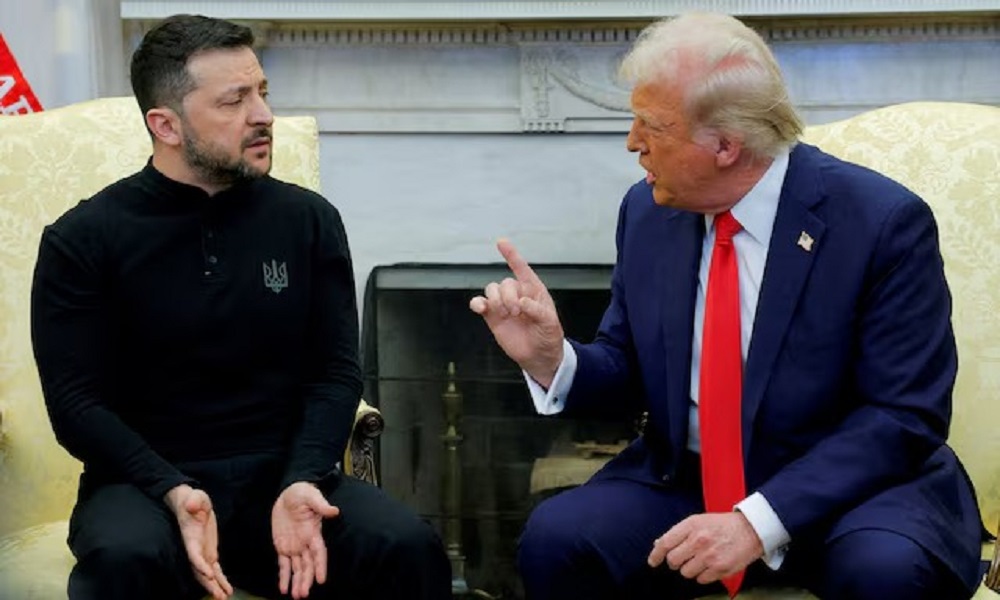
U.S. President Donald Trump said on Sunday Ukrainian President Volodymyr Zelenskiy wants to back out of a critical minerals deal, warning the Ukrainian leader would face big problems if he did.
“He’s trying to back out of the rare earth deal and if he does that he’s got some problems, big, big problems,” Trump told reporters.
“He wants to be a member of NATO, but he’s never going to be a member of NATO. He understands that.”
(Reuters)
-

 Latest News4 days ago
Latest News4 days agoAfghanistan’s reconstruction is in the interest of EU: Uzbek president
-

 Latest News5 days ago
Latest News5 days agoUS won’t rest until all Americans detained in Afghanistan brought home: Rubio
-
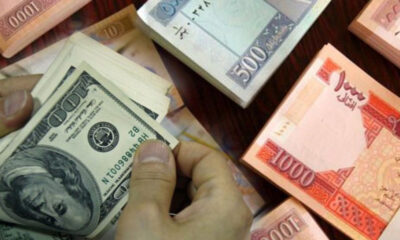
 Latest News4 days ago
Latest News4 days agoMinistry of Economy calls on US to release Afghanistan’s frozen funds
-

 Latest News4 days ago
Latest News4 days agoBulgaria brings five people to trial over deaths of 18 Afghan migrants
-

 Latest News3 days ago
Latest News3 days agoPakistan ‘extends’ deadline for a week for Afghans to leave the country
-

 Regional5 days ago
Regional5 days agoChina launches military drills around Taiwan, calls its president a ‘parasite’
-

 Business5 days ago
Business5 days agoGold climbs to record high as tariff worries bolster safe-haven demand
-

 Sport4 days ago
Sport4 days agoIPL 2025: Batters in race for prestigious Orange Cap

























